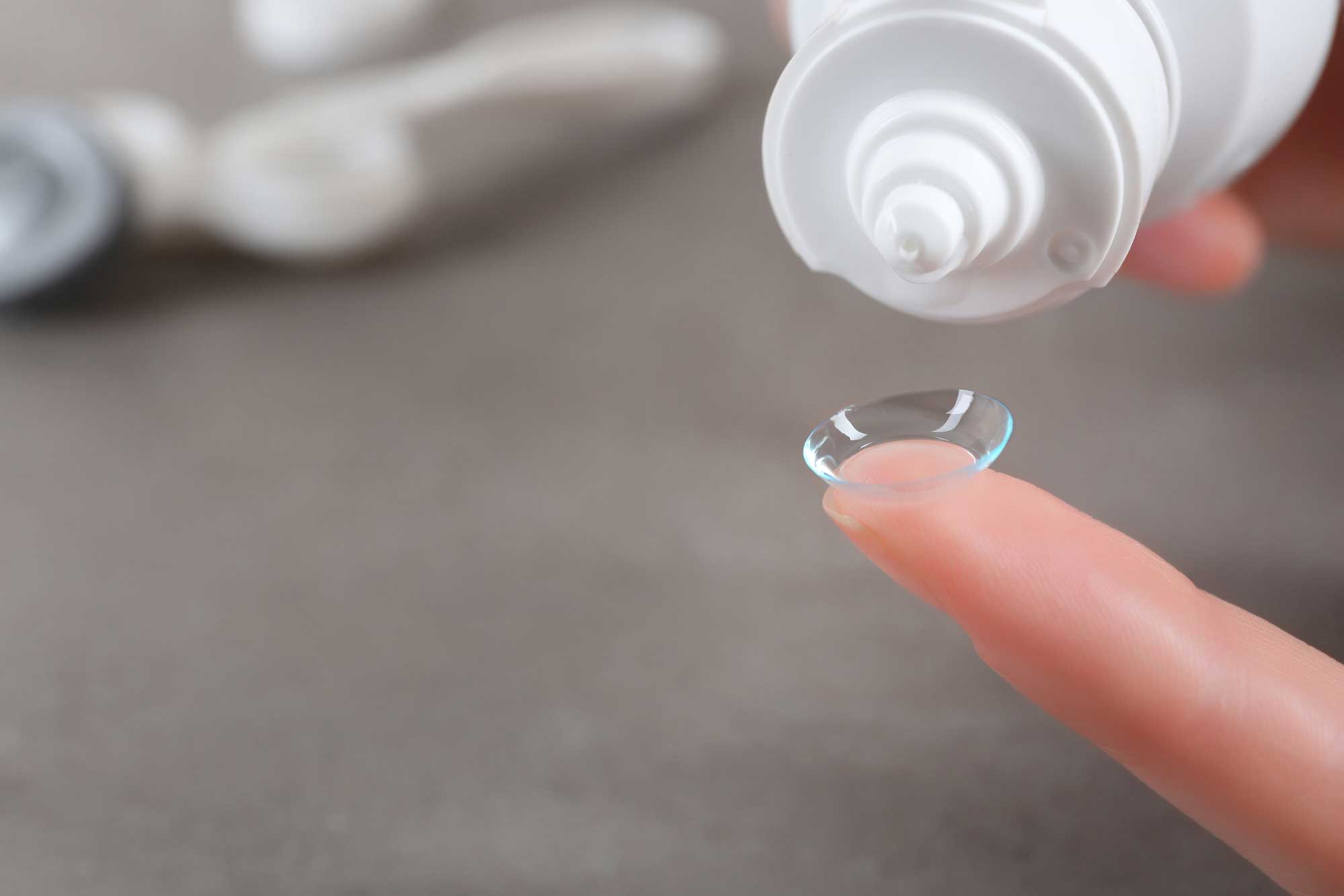According to the Centers for Disease Control and Prevention, more than 30 million Americans wear contact lenses, and nearly 80 percent of people who wear contacts opt for soft contact lenses. There are several types of soft contact lenses available, and exploring the possibilities can help you to decide which of these are the best fit for you.

The Appeal of Contacts
Contact lenses are a popular form of vision correction. For starters, they get the job done, improving vision so that the person wearing them can function with greater safety and effectiveness. They also allow the wearer to maintain a more natural appearance than glasses since contacts are virtually undetectable to most. When properly fitted, they stay in place throughout even strenuous activities, and they don’t fog up like glasses do when you encounter a sudden change in temperature or humidity.
Types of Soft Contact Lenses
What makes a contact lens soft? It’s a matter of material. Hard contact lenses are rigid, gas-permeable lenses crafted from plastics, silicones, or fluoropolymers that hold their shape while still allowing oxygen to flow through the lens to reach the cornea. In contrast, soft contact lenses are made from gel-like, water-containing plastics called hydrogels or from blends of silicone and hydrogel. Because they are less rigid and more flexible, soft contact lenses are far more comfortable and easier to adjust to wearing than hard contact lenses. What are some common types of soft contact lenses?
Extended-Wear Contact Lenses
As the name suggests, extended-wear contact lenses are designed for users to wear over an extended period of time. Unlike other contact lenses, these are intended for overnight wear; users only have to remove them once a week minimum. Although being able to sleep in your contacts may sound convenient, it’s important to note that this type of contact is falling out of favor with vision care providers. That’s because wearing contacts overnight can significantly increase the risk of corneal infection.
Daily-Wear Contact Lenses
Generally the least expensive type of soft contacts, daily-wear contact lenses are worn during the day, removed at night, stored in contact solution, and reinserted in the morning. While they can be worn in this fashion for varying periods, they should be disposed of and replaced with a new pair on a regular schedule. How often do you need to replace daily-wear contact lenses? This depends on your unique situation and the particular type of contact lenses, so be sure to ask your provider.
Disposable-Wear Contact Lenses
Contact lenses are considered medical devices. As such, they are regulated by the U.S. Food and Drug Administration (FDA), and the FDA defines a disposable item as something that is used once and promptly discarded. Under this definition, disposable-wear contact lenses are contacts that are replaced with a new pair each day. This offers plenty of convenience and limits the wearer’s risk of infection. It also makes this kind of lenses a good choice for allergy sufferers or people prone to forming protein deposits on their lenses. However, the line between daily-wear and disposable-wear contacts sometimes gets a bit blurry. Some contacts labeled as disposable are meant to be removed nightly and replaced on a daily, weekly, or monthly schedule. So if you have any questions, contact your eye doctor for help.
Other Varieties of Contacts
Toric Soft Contact Lenses
An astigmatism is an imperfection in the curvature of either the eye’s lens or the cornea that results in troubles with both near and far vision. Many types of soft contact lenses cannot correct for this issue, but toric soft contact lenses are specially shaped to tackle the problem.
Multifocal Contact Lenses
Most soft contacts are single-vision lenses. This means that they can correct for difficulties with either nearsightedness or farsightedness – not both. Multifocal contact lenses can do more. While the visual quality may suffer a bit, these lenses can be used to provide correction at more than one focal distance. They can be used for nearsightedness, farsightedness, and astigmatism in combination with presbyopia.
Colored Contact Lenses
Colored contact lenses can alter the appearance of the iris or the entire eye by changing the color. Although you may be able to find some over-the-counter versions of colored contacts, these are illegal and best avoided because their use has been linked to eye injury and vision loss. If you are interested in colored contact lenses, be smart. Protect your eye health by paying your vision care provider a visit for an eye exam and fitting.
_____
With so many kinds of soft contact lenses available, how do you know which option is best for you? If you live in southwest Missouri, stop by Heffington’s. Since 1975, the Heffington family has been assisting the Springfield community with top-quality eye care and affordable eyeglasses and contacts. One of the unique features of our family-owned business is that we manufacture lenses at our own laboratory, giving us total control over the service and pricing, and we’re happy to pass our savings on to you. To learn more about our products and services, please get in touch with us online, send an e-mail to asktheexperts@heffingtons.com, or give us a call at 417-869-3937 (Optiland location) or 417-882-3937 (House of Vision location). We look forward to hearing from you!
